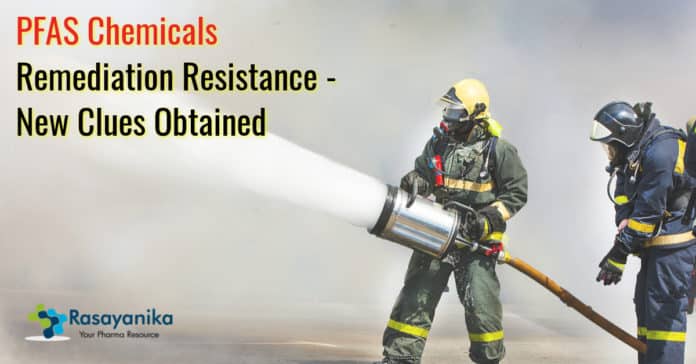PFAS Chemicals Remediation Resistance – New Clues Explain Why
PFAS (Perfluoroalkyl and Polyfluoroalkyl Substances) chemicals are synthetic chemicals that accumulate in soil and groundwater. They display characteristics that pose a dire risk to human life by manifesting as conditions ranging from respiratory problems to cancer.
Environmental Science and Technology Letters published the research conducted by scientists of Oregon State University and the University of Houston, explaining why it is difficult to permanently remove the extremely persistent PFAS chemicals, also called ‘forever chemicals.’ The research team has also offered new approaches that improve remediation practices for these chemicals.
Well-documented PFAS pollution sources mainly include firefighting training sites as the firefighting foam used contains these chemicals that help in fighting fires that involve hydrocarbon-based fuels like diesel and jet fuel.
The interactions form a viscous microemulsion made from water in oil. As a corresponding author and UH energy researcher Konstantinos Kostarelos who worked on the PFAS Chemicals Remediation Resistance, this interaction retains high PFAS levels. Made of hydrocarbon-based fuel and firefighting foam, the microemulsions preserve their composition, unlike other liquid-oil emulsions. The PFAS are encapsulated by the microemulsion phase, which occurs along with an oil phase and a water phase. About 80
% PFAS remained in the microemulsions in subsurface-stimulating experimental trials with the substances pass through the soil. Kostarelos explained their difficulty in passing through explains their persistence over decades.Apart from firefighting foam, PFAS are also present in several consumer products, from microwave popcorn bags and Teflon to anti-stain treatments. Chemical production was prominent during the chemical boom of World War II. Resisting oil, heat, and water because of carbon-fluorine atom bonding gave them the most value as they could sustain during traditional chemical removal/breaking methods.
With their half-life shortened by newer chemical formulations, regulatory actions and lawsuits have targetted PFAS. The older formulations’ toxic legacy continues to create PFAS Chemicals Remediation Resistance. New clean-up methods and determination of contamination source will be possible by comprehending this microemulsion formation, as Kostarelos said. Recovering microemulsion will also be possible due to its viscous nature.
The US Department of Defense’s Strategic Environmental Research and Development Program funded this research carried out by Kostarelos and co-authors Jennifer Field, Emerson Christie, Emerson Christie from Oregon State University, and UH’s Pushpesh Sharma.

















































